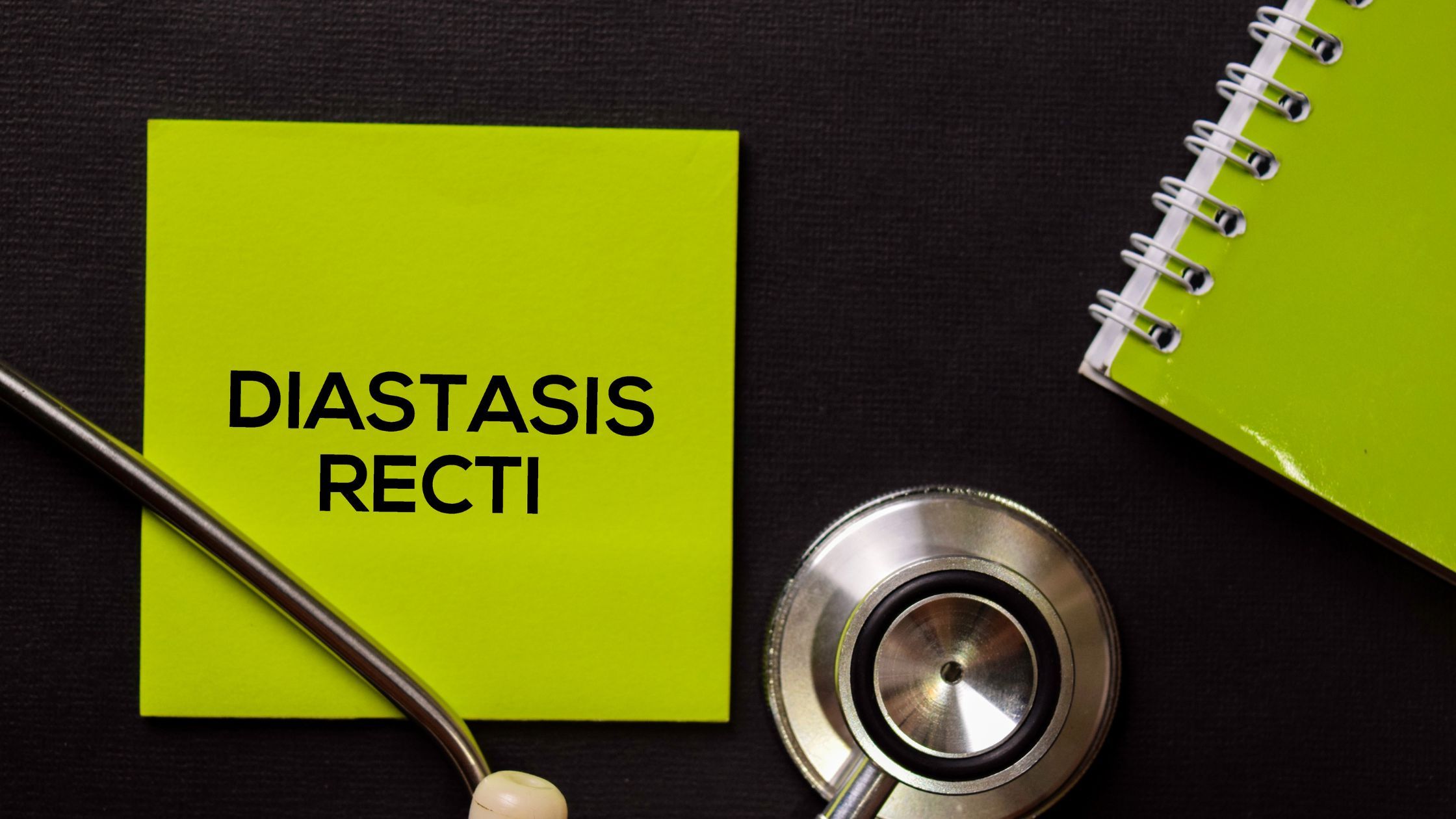Postnatal Health Problems – Rectus Diastasis

Rectus diastasis is one of the symptoms that can cause postnatal discomfort. It is often overlooked. In this guest article, expert Carolin Tengelmann talks about what may be the common cause behind your postnatal symptoms and how she helps mothers to improve their quality of life again.
As a rectus diastasis expert, Carolin Tengelmann takes a holistic approach to everyday behavior, posture training, muscle exercises and nutrition. She has not only closed her own diastasis but has also helped many women and men to regain their quality of life and enjoyment of life. Because diastasis is not just an issue for young mothers.
After the birth of your child, your life as a mother is completely reorganized. Joy and exhaustion alternate constantly. But sometimes the emotional challenges are joined by physical ailments that make motherhood a burden. Weeks, months and even years after giving birth, many mothers struggle with a variety of symptoms, such as back pain, pelvic floor complaints, gastrointestinal problems, posture problems, bloating, period problems and stress incontinence.
The often overlooked problem
You may have noticed that your belly doesn’t look the way you expected it to after giving birth. This could be due to rectus diastasis – a change in the body that is often overlooked but can have major consequences. It affects the tissue that connects your straight abdominal muscles in the middle. The linea alba, as the tendon plate on which the straight and oblique abdominal muscles are suspended, is so overstretched and weakened in the case of rectus diastasis that the abdominal wall is less able to withstand the pressure of the organs. This results in a pregnant appearance.
The various causes
The most common cause of rectus diastasis is pregnancy, where the growing abdomen stretches the abdominal wall to make room for the baby. However, weight gain, abdominal surgery, as well as certain exercises such as crunches, sit-ups and some Pilates or yoga exercises can also contribute to rectus diastasis by overstretching and straining the connective tissue of the linea alba. Many women are unaware of this and do not realize that it can be the cause of their discomfort. If left untreated, it can have far-reaching effects on the whole body.
Effects of rectus diastasis
These can be varied and have a major impact on your life. Here are some of the possible consequences:
Pelvic floor problems and stress incontinence:
If the abdomen is no longer sufficiently stabilized, the pelvic floor can become strained, leading to problems such as stress incontinence. This means that you may leak urine unintentionally during activities such as sneezing, jumping or jogging. Pain during sex can also have its origins in rectus diastasis.
Back pain:
The weakened abdominal wall can overload the back muscles, which can lead to pain and cramps in the back. Your back has to work harder to stabilize your body, which can lead to persistent discomfort.
Bloated belly and altered belly button:
Many women with rectus diastasis suffer from a bloated belly, especially in the evening or after eating. In extreme cases, a glass of water in the morning is enough to make the belly bulge. The belly button can also change as it is anchored in the linea alba. The increased tension on the tissue often makes it appear larger or even fall forward (Outie).
Postural problems:
The weakened abdominal wall can affect your posture and lead to a hollow back or hunchback. The instability in the middle of your body can put strain on your spine and even lead to a slipped disc.
HHernias (umbilical hernia):
Overstretching of the tissue means there is a risk of hernias, such as umbilical or abdominal wall hernias. This creates a tear in the connective tissue through which tissue or organs can protrude, often leading to visible swelling and pain. These challenges can severely impact your daily life and often women are unaware that these symptoms can be caused by rectus diastasis. It is important to seek early support and treatment to improve your quality of life and address these issues.
The way to recovery
Doctors are often only aware of surgery as a solution. However, you also have the option of improving diastasis and alleviating your pain and limitations through consistent behavior in everyday life and the right training. It’s not just about minimizing the visual effect, as is sometimes suggested. Diastasis is often only seen as a cosmetic problem and not as medically relevant.
Many women often find themselves in a vicious cycle of symptomatic treatments, unaware that their back pain may be caused by rectus diastasis. Once you understand how your body is structured and that your weakened abdomen has overloaded your back and possibly also your pelvic floor, things often progress quickly: your abdomen stabilizes and the overloaded areas that caused the actual pain relax. Many women then experience a period with less or no pain, and even problems such as increased bleeding during periods can normalize.
Specific exercises
The first major progress is usually visible and, above all, noticeable after just six to eight weeks of therapy. However, the connective tissue needs almost a year to become a strong and resilient tendon plate again so that it can contract again after strain. Patience is therefore required and integration into your everyday life. It is crucial that you perform the exercises regularly to ensure effective rehabilitation.
The treatment
It usually requires a targeted exercise program that aims to gradually strengthen your abdominal core and reduce the diastasis. It is important to start by placing little to no strain on the straight and lateral abdominal muscles in order to reduce the tension on the tendon. Pilates and yoga are therefore not suitable initially. A holistic approach can also be helpful by taking into account not only the deep muscles, but also your pelvic floor and overall posture.
Prevention and awareness
Another important element is prevention. Many women could avoid rectus diastasis developing into a major problem after childbirth from the outset if they do the right exercises and take care of their bodies during pregnancy and after childbirth. Education and preventative measures should be an integral part of modern pregnancy care.
Another important tip for the many women who are long past their pregnancies and births: : it’s never too late to work on diastasis. The body knows what it needs to do to regenerate the tissue. If you give it the right support, you will be successful together.
Conclusion
The postnatal symptoms that can affect you are often challenging. However, knowing about rectus diastasis and its far-reaching effects is an important step in improving your quality of life. With the right diagnosis, treatment and education, you can learn to overcome this challenge and make lasting improvements to your health and well-being. Carolin Tengelmann’s work shows that many postnatal complaints should not be considered in isolation, but as part of a bigger picture in which deep muscle exercises play a central role.
Photos: Carolin-Tengelmann (4)

C&C Autorin aus Köln
Carolin Tengelmann ist Rektusdiastase-Expertin und Gründerin von Prexletics. Durch ihr fundiertes Fachwissen, ihre langjährige Erfahrung und eigenes Betroffensein hat sie eine einzigartige Coaching-Methode entwickelt, um Frauen und auch von Diastase betroffene Männer dabei zu unterstützen, trotz Alltagsstress ihre Lebensqualität zu verbessern und ihr Wohlbefinden zu steigern.







